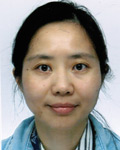2014
Li Yu
- Associate Professor
- Williams College

Abstract
The international workshop of “How to Read a Chinese Book: Through the Lens of Paratexts” aims to bring together scholars of China from North America, Europe, and Asia to closely examine the paratextual elements of the “traditional” Chinese book in relation to its main text. For the purposes of the workshop, “the Chinese book” is a woodblock imprint of the late imperial period (late Ming and Qing, roughly the late sixteenth century to the early twentieth century). Gerard Genette, the most influential theorist of paratexts, defined them as “those liminal devices and conventions both within the book and outside of it that mediate the book to the reader.” Prefaces, postscripts, explanations of editorial principles (fanli), colophons, commentary, tables of contents (mulu), page layout, punctuation—these are common types of paratexts—all reveal how the author or editor and/or publisher of a text tried to shape the reading experience. As such they are important parts of the meaning of texts. Paratexts are also valuable sources for the study of reading practices. In this workshop, participants will not only explicate how paratexts work in the Chinese book culture but also discover the prescribed or embedded reading practices through a close examination of the paratextual elements of a wide range of genres of Chinese texts, including the classics and their commentaries, Christian writings in Chinese of Jesuit missionaries, civil service examination records, household encyclopedia, popular drama, children’s primers, as well as forged texts.
Dates of Workshop: October 3-5, 2014
Location of Workshop: Williams College
Dates of Workshop: October 3-5, 2014
Location of Workshop: Williams College

